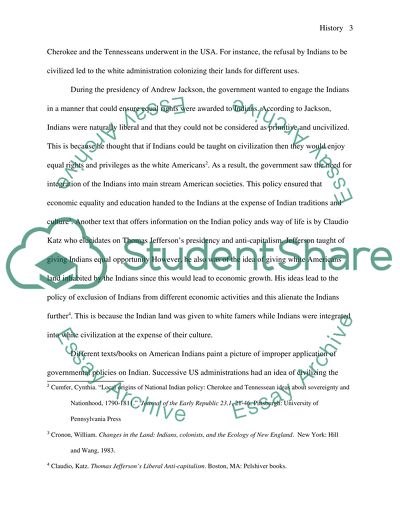Indians and Indian Policy Essay Example | Topics and Well Written Essays - 750 words. Retrieved from https://studentshare.org/history/1446808-the-indians-and-indian-policy
Indians and Indian Policy Essay Example | Topics and Well Written Essays - 750 Words. https://studentshare.org/history/1446808-the-indians-and-indian-policy.


